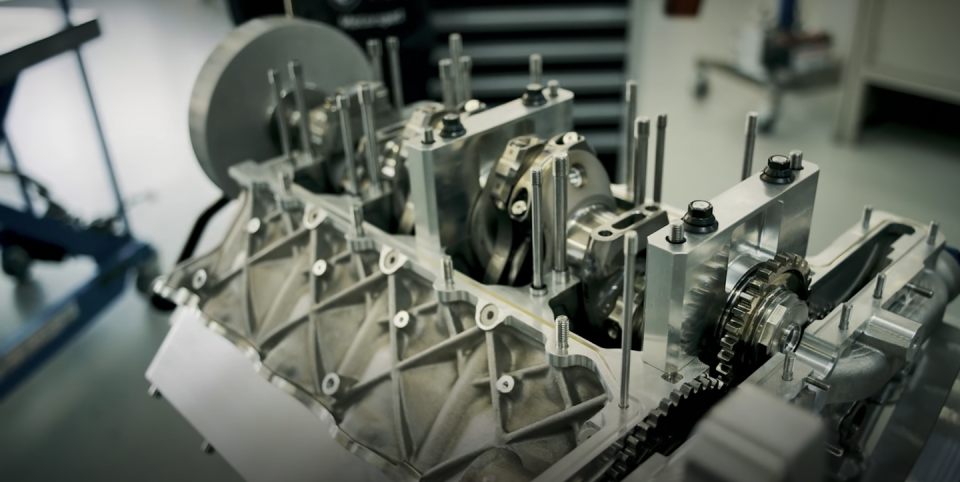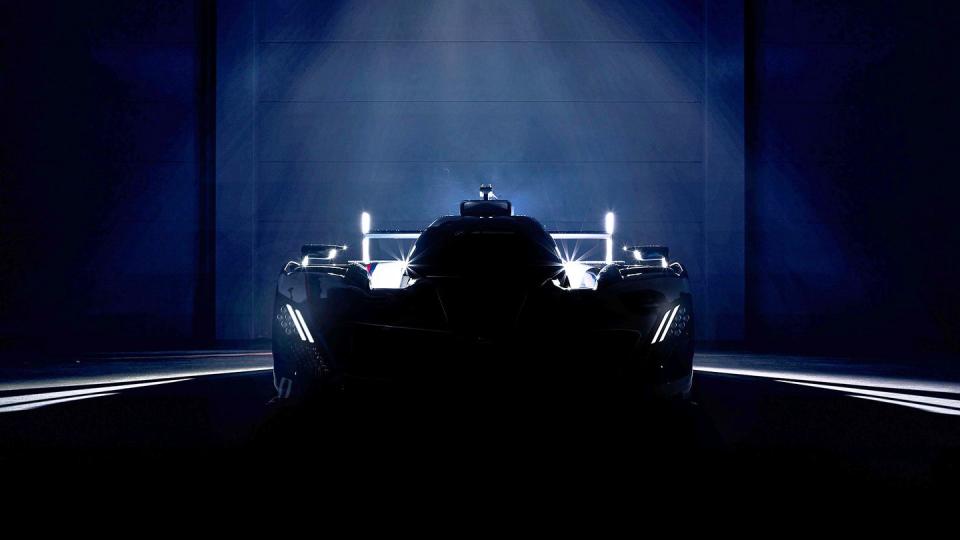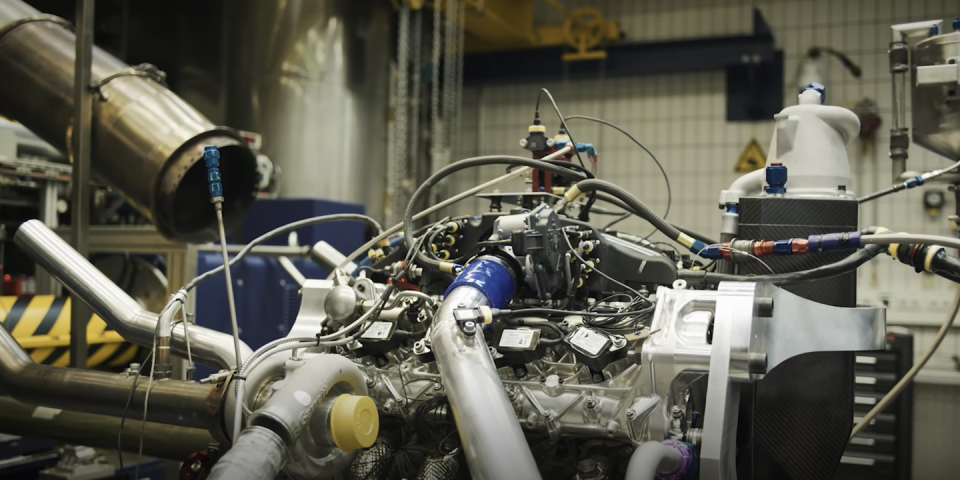BMW LMDh Car Will Use a DTM-Derived Twin-Turbo V-8

The regulations for next year's LMDh prototypes, which will race in IMSA's GTP class and in the World Endurance Championship's Hypercar class, are fairly prescriptive... except when it comes to the internal-combustion engine. There are some specific dimensions in place so the cars comply with weight minimums and so the engine actually fits with the spec, hybridized transaxle, but the power unit doesn't need to be production-based. Rev limit is set at 10,000 rpm, noise limit is 110 decibels, and the engine plus hybrid system will be limited to between 644 and 697 hp at the rear wheels, but otherwise, automakers are free to bring what they want. BMW is taking advantage with an old V-8.
In the run-up to the June 6 launch of BMW's LMDh car, we looked back at a series of videos BMW M has posted to its YouTube channel. In episode 6 of "Mbedded," we get a behind-the-scenes look at the manufacture and testing of the LMDh car's power unit, a twin-turbo flat-plane V-8 derived from an engine used in DTM.
Wearing the codename P66 (BMW M race engine codes always start with the letter "P"), this engine was used in both the E92 M3 DTM and F80 M4 DTM between 2012 and 2018, before being replaced by a turbo four-cylinder for DTM's new regulations in 2019. In naturally aspirated DTM guise, the P66 displaced 4.0 liters and made 480 hp initially, and 500 hp when regulations permitting more power were put in place for 2017. The P66 is a totally bespoke unit, unrelated to any BMW production engine.

For the LMDh car, it gains direct injection and gets two turbochargers which boosts output to... well, BMW isn't saying yet. LMDh regulations allow a lot of freedom in how the internal-combustion engine and hybrid system are balanced, just as long as the maximum power at the rear wheels isn't exceeded. Per the technical regulations, the hybrid system can provide a maximum of around 67 hp, but that doesn't therefore mean that BMW has to use all of it.
Ulrich Schulz, head of race engine design at BMW M, says that some of the components and basic designs used in this engine come from BMW's days making Formula 1 engines. He also happily points out the less-exotic origin of the throttle body—it comes from BMW's three-cylinder Mini engine. One of the heat exchangers comes from BMW's M67 V-8 diesel, an engine that ended production in 2009.

The video shows dyno testing of the V-8 and the hybrid system, though the first time that the two will be run together will be in the actual car. BMW engineers also say they will have three engines per car.
Porsche is also taking the twin-turbo V-8 route. Based on testing videos, it sounds like Porsche's V-8 has a flat-plane crankshaft, too, so the Stuttgart brand is taking advantage of the freedom allowed.
BMW's LMDh car will be its first sports prototype since the 1999 Le Mans-winning V12 LMR, which bowed out of racing in 2000 with the automaker shifting its focus to F1. (BMW engines powered a number of successful Daytona Prototype racers, but those were not built or designed by BMW.) It'll also be the first LMDh car to be revealed in full, and it's expected to make its race debut at Daytona next year alongside cars from Acura, Cadillac, and Porsche.
You Might Also Like

 Yahoo Autos
Yahoo Autos 